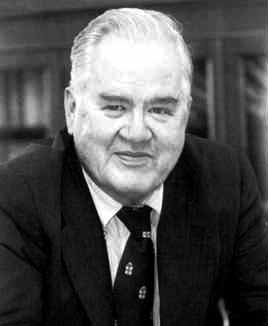
John Tukey
John Wilder Tukey (/ˈtuːki/; June 16, 1915 – July 26, 2000) was an American mathematician and statistician, best known for the development of the fast Fourier Transform (FFT) algorithm and box plot.[2] The Tukey range test, the Tukey lambda distribution, the Tukey test of additivity, and the Teichmüller–Tukey lemma all bear his name. He is also credited with coining the term bit and the first published use of the word software.
"Tukey" redirects here. For other uses, see Tukey (disambiguation).
John Tukey
June 16, 1915
July 26, 2000 (aged 85)
- Exploratory data analysis
- Multiple comparisons problem
- Projection pursuit
- Box plot
- Blackman–Tukey transformation
- Cooley–Tukey FFT algorithm
- Freeman–Tukey transformation
- Siegel–Tukey test
- Stone–Tukey theorem
- Tukey–Duckworth test
- Tukey's range test
- Tukey lambda distribution
- Tukey's trimean
- Tukey's test of additivity
- Tukey's lemma
- Tukey mean difference plot
- Tukey median
- Tukey depth
- Tukey's biweight function
- Tukey's fences
- Tukey window
- Cepstrum
- Flexagon
- Median polish
- Midhinge
- Slash distribution
- Theory of conjoint measurement
- Coining the term 'bit'
- Scagnostics
- Wilks Memorial Award (1965)
- National Medal of Science (1973)
- Shewhart Medal (1976)
- IEEE Medal of Honor (1982)
- Deming Medal (1982)
- Foreign Member of the Royal Society (1991)
On Denumerability in Topology[1]
Biography[edit]
Tukey was born in New Bedford, Massachusetts, in 1915, to a Latin teacher father and a private tutor. He was mainly taught by his mother and attended regular classes only for certain subjects like French.[3] Tukey obtained a B.A. in 1936 and M.S. in 1937 in chemistry, from Brown University, before moving to Princeton University, where in 1939 he received a PhD in mathematics after completing a doctoral dissertation titled "On denumerability in topology".[4][5][6]
During World War II, Tukey worked at the Fire Control Research Office and collaborated with Samuel Wilks and William Cochran. He is claimed to have helped design the U-2 spy plane. After the war, he returned to Princeton, dividing his time between the university and AT&T Bell Laboratories. In 1962, Tukey was elected to the American Philosophical Society.[7] He became a full professor at 35 and founding chairman of the Princeton statistics department in 1965.[3]
Among many contributions to civil society, Tukey served on a committee of the American Statistical Association that produced a report critiquing the statistical methodology of the Kinsey Report, Statistical Problems of the Kinsey Report on Sexual Behavior in the Human Male, which summarized "A random selection of three people would have been better than a group of 300 chosen by Mr. Kinsey".
From 1960 to 1980, Tukey helped design the NBC television network polls used to predict and analyze elections. He was also a consultant to the Educational Testing Service, the Xerox Corporation, and Merck & Company.
During the 1970s and early 1980s, Tukey played a key role in the design and conduct of the National Assessment of Educational Progress.
He was awarded the National Medal of Science by President Nixon in 1973.[3] He was awarded the IEEE Medal of Honor in 1982 "For his contributions to the spectral analysis of random processes and the fast Fourier transform (FFT) algorithm".
Tukey retired in 1985. He died in New Brunswick, New Jersey, on July 26, 2000.
Coining the term bit[edit]
While working with John von Neumann on early computer designs, Tukey introduced the word bit as a portmanteau of binary digit.[17] The term bit was first used in an article by Claude Shannon in 1948.